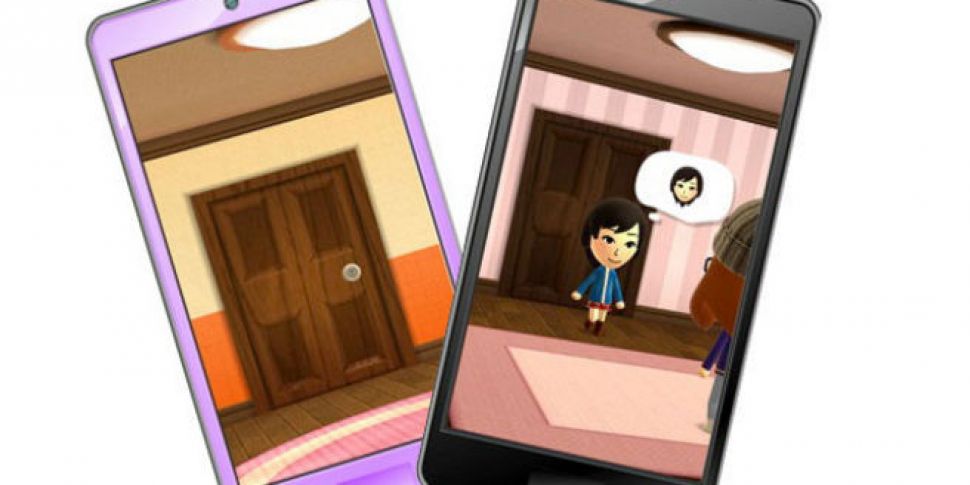Nintendo's adamant stance against bringing their properties to the mobile market has been well-documented. Over the last five years or so, multiple interviews have been conducted with Nintendo's late CEO Satoru Iwata to comprehend what was seen as a perplexing decision. In 2011, Iwata spoke on long-term gains being core to the company’s ethos; and in 2013, he spoke again on the mobile push running counter to Nintendo's prosperity, believing that following such a path would risk contaminating their business model. Jose Cardoso looks at the evolution of this stance and the new Miitomo app.
Nintendo's reluctance was evidently born from a desire to maintain image and implement decisions that align with their internal philosophy, rather than fear of being booted by adept competitors. What others saw, however, was an aged company refusing to adapt, and this led to pushback from all sides: investors, media outlets, industry analysts, and gamers.
On March 17, 2015, Nintendo announced they were preparing a mobile plan with DeNa as a key partner. Established IPs were (surprisingly) not off-limits, but they would be used in new concepts, thus ruling out re-releases of past titles. Hopeful questioning shifted to disdainful questions and told-you-so commentary. During the post-announcement Q&A, one investor suggested it was a reactionary move based on dwindling business prospects. Another insinuated that DeNa wasn't the right partner.
Fast forward to today, and Nintendo's plan is in full force with the North American debut of Miitomo. The app spotlights, not Nintendo's greatest heroes, but Mii characters. Miitomo is built around social interaction: users volunteer opinions and personal preferences via question prompts, and answers are transmitted to friends. You won't be asked if you'd rather have a “Mario & Friends” app, though.
If the thought of playing 20 Questions doesn't sound compelling, Nintendo has incentivized the app by tying it to the new My Nintendo loyalty program. As Club Nintendo’s replacement (discontinued in 2015), points earned from game purchases and interactions can be exchanged for goodies (digital-only for now), including an exclusive Picross title centered around The Legend of Zelda: Twilight Princess.
Personalisation is a big part of Miitomo. Miis can be accessorized using outfits and novelty items, including a VR helmet, purchased from the in-app Shop, and you’ll earn rewards simply for being "fashionable". By default, you'll get 2,500 Coins in spending currency, and linking your Nintendo Account, a new consolidation of the current Nintendo Network ID system, will mean a bonus of equal amount. Accumulating more will require continued use of the app or paying real money.
For shutterbugs and photobombers, Miis can be pasted onto backgrounds or real photos to create Miifotos. After being spruced up with graphics, text and stamps, these can be shared with friends or entered into photo contests.
It's important to recognise that Miitomo isn't representing a wild deviation for Nintendo; in reality, past outings from the company have paved the way for its direction. The most influential precursor: Tomodachi Life.
The wacky 3DS title similarly brought Miis together under a social context, but as a life simulation hybrid. Although you might think the Mii-focused premise would have guaranteed it an audience in the Western market, for the longest time Tomodachi Life was thought to be too bizarre to leave Japan: over-the-top news reports, kitschy stage performances, and off-the-wall dream sequences. It eventually arrived in 2014, about a year after its Japan release.
Miitomo's structural influences actually go back further than this.
During the Wii era, Nintendo released the now-discontinued Check Mii Out Channel application, capitalizing on the community's obsession with Miis of famous characters by making it into something of a sport. Miitomo's photo contest feature is a re-imagining of this.
Also released during this period: the variety-rich Wii Party. It featured a mode called Friend Connection, where two people would secretly give answers on multiple-choice questions to determine compatibility. A silly friendship test, perhaps, but the similarities to Miitomo are clear.
In current times, a handful of Wii U titles allow players to add pre-made stamps to Miiverse posts. The unfortunate drawback is that these can only be used within the game they're associated with and are not permanent fixtures of Nintendo's internal social service, limiting the applications of, for example, the retro character stamps of NES Remix. And in Miitomo, we see Nintendo again offering stamps for user-generated content.
Miitomo's monetization elements aren’t surprising, either — and not because of market tendencies. Nintendo has been experimenting with new payment structures for some time with their plainly-stated "free-to-play" 3DS titles. Rusty's Real Deal Baseball, for example, parcels out its training mini-games into individual packages, and by listening to the shopkeeper's tales of woe, players can press him into bringing down the cost. The lovely undersea dogfight arena,Steel Diver: Sub Wars, can be sampled for free but contains missions and a complete range of submarines in a premium download. And Nintendo Badge Arcade offers daily trials for a chance to use its crane machines for free, rather than paying $1.00 USD.
Nintendo Badge Arcade's influences on Miitomo go beyond monetization, too, as seen with the arcade-like setup of Miitomo Drop, the one “game” component of the app. The activity itself is not unlike the bonus game from Nintendo Land, which used Coins earned from attractions as play tokens in a Pachinko machine.
Who's to say whether or not Miitomo's casually-break-down-barriers premise will see to widespread acceptance, but it certainly bears Nintendo’s playful charm. And the inspirations served by forgotten concepts and recent experiments do much to establish its fit in Nintendo's overall scheme. Being that this is the result of much initial resistance, it’s fair to say this new path that Nintendo now accepts will be one traveled by cautious feet.









